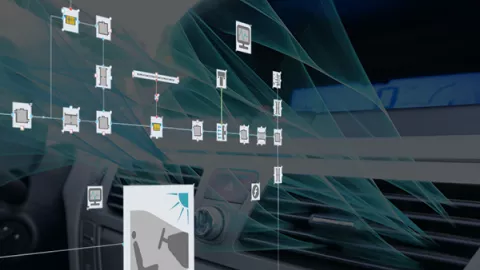
With the rise of new powertrain technologies, the comfort of the passenger in the cabin and the energy management of the air conditioning system are becoming increasingly important. This live webinar will demonstrate how to simulate the cabin cool-down and the impact of the air-conditioning system on the energy consumption.Virtual Integration of xEV HVAC Systems in the Vehicle Thermal Network
While the market share of electric vehicles is steadily increasing, one of the key factors which is still slowing their adoption is the limited range. Besides the powertrain, the heating and air-conditioning systems are the highest energy consumers. It is therefore crucial to optimize their power consumption while also keeping an eye on passenger comfort. Simulation tools offer a safe and cost-effective way for engineers to investigate HVAC concepts, develop control functions and analyze the interplay of various subsystems, materials and climate conditions. AVL developed a system simulation solution which allows thermal engineers to model arbitrary air conditioning systems using a wide array of state-of-the-art refrigerants and connect them to a cabin model. Merged with the powertrain and the thermal management system, it is possible to simulate the temperature pull-down and heat-up, as well as the impact of the air conditioning system on the energy consumption in the vehicle. In this webinar we will show how AVL’s simulation solution leverages the calculation of cabin cool-down and the prediction of energy consumption in a transient drive cycle.